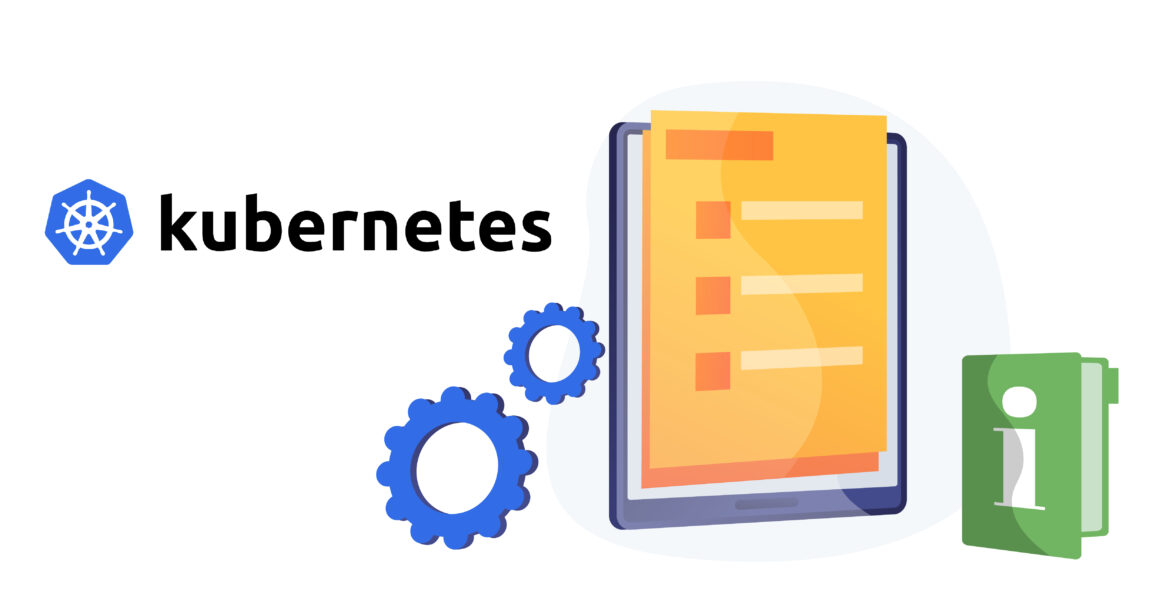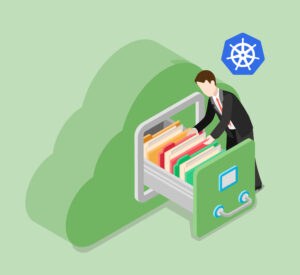Kubernetes has emerged as the leading container orchestration platform, enabling organisations to build, deploy, and manage containerised applications at scale. With Kubernetes, you can streamline the deployment process, optimise resource utilisation, and ensure high application availability. However, to make the most of Kubernetes, it’s crucial to design applications effectively from the ground up.
In this blog post, we’ll explore various aspects of architecting applications for Kubernetes, including designing for scalability, containerising components, deciding on container and pod scope, managing configurations, implementing probes, and using deployments for scale and availability.
- Designing for Application Scalability
Scalability is a pivotal aspect of modern applications. When designing your application for Kubernetes, it’s essential to consider how it will scale horizontally and vertically. Horizontal scaling involves adding or removing replicas of your application components to handle varying traffic demands, while vertical scaling involves adjusting the resources allocated to each component.
To design your application for horizontal scalability, ensure it’s stateless, meaning it doesn’t store any user-specific data on the server. Also, ensure that your application components can be distributed across multiple replicas with a load balancer directing traffic to them.
For vertical scaling, ensure your application can efficiently utilise resources like CPU and memory without hitting bottlenecks. The application should be capable of adjusting its resource consumption according to the available resources.
- Containerizing Application Components
Containerisation is the process of bundling an application’s code and dependencies into a single, portable unit called a container. When architecting applications for Kubernetes, it’s crucial to containerise each component separately. This enables you to deploy, scale, and manage each component independently, thereby improving flexibility and efficiency.
Use Docker or another container runtime to create container images for your application components, ensuring that each image contains only the necessary dependencies. Additionally, follow best practices for container image optimisation, such as using multi-stage builds and minimising the image size.
- Deciding on Scope for Containers and Pods
Kubernetes groups containers into pods, which are the smallest and simplest units in the Kubernetes object model. Deciding on the scope of containers and pods is essential when designing your application.
In general, it’s a good practice to have a single container per pod, as it simplifies management and scaling. However, in some cases, it might be necessary to group multiple containers within a single pod if they share storage or rely on each other for functionality. For instance, a web application and its caching mechanism might need to be deployed in the same pod to ensure data consistency.
- Extracting Configuration into ConfigMaps and Secrets
When architecting applications for Kubernetes, it’s crucial to separate configuration data from application code. This enables managing and updating configurations without rebuilding and redeploying container images.
Use Kubernetes ConfigMaps and Secrets to store and manage the application’s configuration data. ConfigMaps are suited for non-sensitive data, such as feature flags and environment-specific settings, while Secrets are designed for sensitive data, such as API keys and passwords.
- Implementing Readiness and Liveness Probes
Probes are essential to ensure the health and availability of application components in a Kubernetes environment. Readiness probes verify whether a container is ready to accept traffic, while liveness probes check if a container is running correctly and needs to be restarted.
Implement appropriate readiness and liveness probes for application components, considering each component’s specific requirements and characteristics. For instance, a web application might require an HTTP GET request to a specific endpoint as a readiness probe. In contrast, a database might require a custom script to verify availability.
- Using Deployments to Manage Scale and Availability
Deployments in Kubernetes manage the desired state of the application, ensuring that the specified number of replicas is running and rolling out updates without downtime.
When architecting applications for Kubernetes, use deployments to define the desired state of application components, including the container image, the number of replicas, and the update strategy. This enables managing the scale and availability of the application easily, ensuring that it can handle varying traffic demands and recover from failures.
- Implementing Service Discovery and Load Balancing
In a Kubernetes environment, applications must be able to discover and communicate with each other efficiently. Service discovery and load balancing are crucial components of architecting applications for Kubernetes.
Use Kubernetes Services to expose application components to other components within the cluster or external clients. Services provide a stable IP address and DNS name, enabling seamless service discovery and load balancing across multiple replicas of your application components.
- Ensuring Data Persistence and Storage Management

Leverage Kubernetes’ StatefulSets and Persistent Volumes (PVs) to manage stateful applications and ensure data persistence. StatefulSets provide stable network identities and storage for each replica of the application component, while PVs and Persistent Volume Claims (PVCs) enable dynamic provisioning and management of storage resources.
- Monitoring and Logging
Monitoring and logging are essential for maintaining the health and performance of applications in a Kubernetes environment. Implementing proper monitoring and logging practices helps in identifying and resolving issues quickly and efficiently.
Use Kubernetes-native tools like Prometheus for monitoring and Fluentd for logging to collect and analyse metrics and logs from application components. Additionally, integrate these tools with external monitoring and logging solutions, like Grafana and Elasticsearch, for advanced visualisation and analysis capabilities.
- Implementing Security Best Practices
Security is a critical aspect of architecting applications for Kubernetes. Ensuring that applications are secure helps protect sensitive data and prevents unauthorised access.
Follow Kubernetes security best practices, such as using Role-Based Access Control (RBAC) for fine-grained permission management, implementing network policies to control traffic flow between components, and keeping container images up-to-date with the latest security patches. Additionally, leverage Kubernetes-native security tools, like Pod Security Policies and Kubernetes Network Policies, to further enhance the security of applications.
- Continuous Integration and Continuous Deployment (CI/CD)
Implement a robust CI/CD pipeline for Kubernetes applications to ensure that applications are consistently up-to-date and stable. CI/CD enables rapid development, testing, and deployment of your applications, ensuring that they meet the required quality standards.
Integrate your Kubernetes applications with popular CI/CD tools like Jenkins, GitLab, and CircleCI to automate the build, test, and deployment processes. Additionally, leverage Kubernetes-native tools, like Helm and Kustomize, to manage and deploy application configurations across different environments.
Conclusion
Architecting applications for Kubernetes is a complex task that requires a deep understanding of the platform’s capabilities and best practices. By focusing on scalability, containerisation, service discovery, data persistence, monitoring, logging, security, and CI/CD, can be build robust, scalable, and highly available applications that fully leverage the power of Kubernetes. With a solid architectural foundation in place, applications will be well-equipped to meet the challenges of today’s dynamic and ever-evolving application landscape.
Architecting applications for Kubernetes requires careful planning and adherence to best practices.
- CloudSigma to Make Waves at CloudFest 2024: Europe’s Premier Cloud Computing Event - February 29, 2024
- How CloudSigma is Preparing for NIS 2 Directive to Strengthen Europe’s Cybersecurity - September 4, 2023
- CloudSigma Expands Cloud Infrastructure with New Location in Cardiff, UK, in Collaboration with Centerprice - August 17, 2023
- CloudSigma Unveils Groundbreaking GPU-as-a-Service, Redefining Cloud Computing Possibilities - August 16, 2023
- CloudSigma GPU-as-a-Service - August 16, 2023



